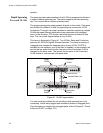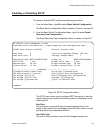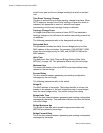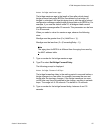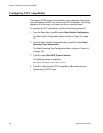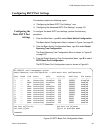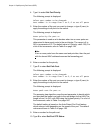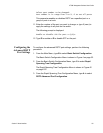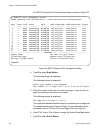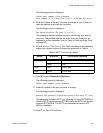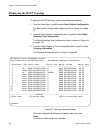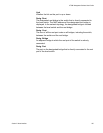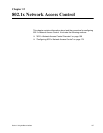
Chapter 11: Rapid Spanning Tree Protocol (RSTP)
160 Section II: Menus Interface
4. Type I to select Set Port Priority.
The following prompt is displayed:
Select port number to be changed>
Port number is in range from 1 to 9, 0 to set all ports
5. Enter the number of the port you want to change, or type 0 (zero) to
apply the settings to all ports on the switch.
The following prompt is displayed:
Enter priority for port
n>
This parameter is used as a tie breaker when two or more ports are
determined to have equal costs to the root bridge. The range is 0 to
240 in increments of 16. The default value is 8 (priority value 128). For
a list of the increments, refer to Table 5 on page 149.
Note
If two or more ports have the same cost and priorities, then the port
with the lowest MAC address becomes the forwarding port.
6. Enter a number for the priority.
7. Type C to select Set Path Cost.
The following prompt is displayed:
Select port number to be changed>
Port number is in range from 1 to 9, 0 to set all ports
8. Enter the number of the port you want to change, or type 0 (zero) to
apply the settings to all ports on the switch.
The following prompt is displayed:
Enter path cost for port
n>
The spanning tree algorithm uses the cost parameter to decide which
port provides the lowest cost path to the root bridge for that LAN.The
range is from 0 to 240, with 240 being the highest priority. For a list of
the increments, refer to Table 5 on page 149.
The default setting is based on the Auto-Detect Port Cost feature,
which sets port cost depending on the speed of the port. The default
values are shown in Table 3 on page 148.
9. Enter a number for the path cost.
10. Type S to select Set Port STP Status.



